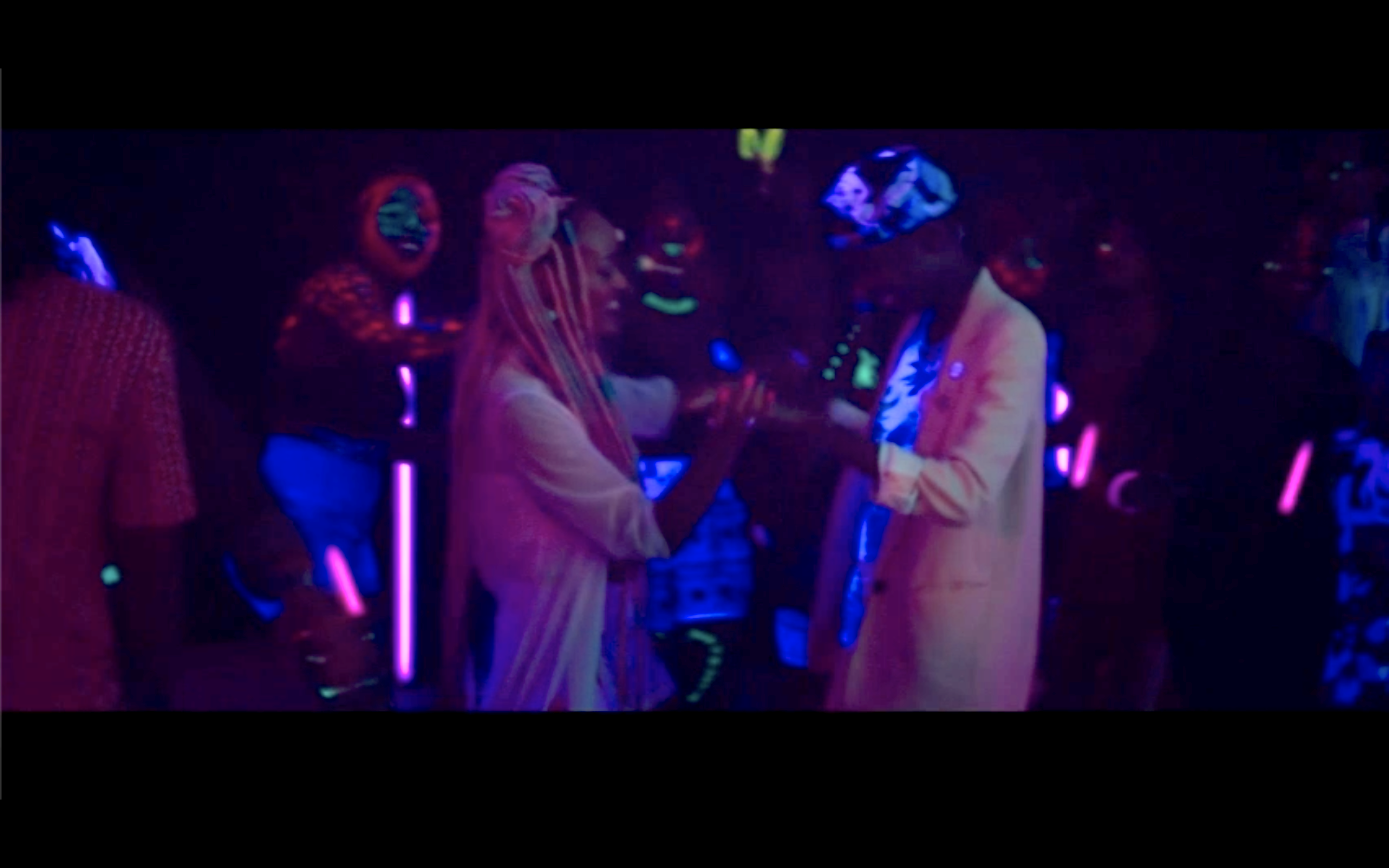About the lists: Calls to socially distance and self-isolate are driving people to look for things to watch. But the sheer amount of options out there can be overwhelming. For this reason, we at the Centre for Screen Cultures are producing themed playlists of film, video, and television so you can organise your own series or festival at home (or home school). They will update here and here: https://screenculture.wp.st-andrews.ac.uk/category/media-playlists/
Colour plays an essential role in film, from technologies of making to the production of meaning. In this list Kirsty Dootson offers up a Rainbow of Film and Film Colour:
Rainbows are springing up all over the UK at the moment, as children post them in windows to send messages of hope to passers-by (presumably out on their government-sanctioned-daily-exercise). So, consider this playlist a kind of cinematic rainbow posted up in the virtual window of St Andrews’ Film Studies department, with one film for every colour in the spectrum.
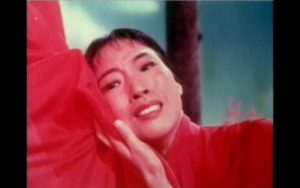 RED
RED
The Red Detachment of Women (Pan Wenzhen & Fu Jie, China, 1970)
Red is indelibly associated with Chinese visual culture as both a celebratory and revolution hue, so it seems only appropriate to begin our rainbow of film colours in China. The Red Detachment of Women is based upon the real experiences of female soldiers fighting in the Chinese Civil War, whose story was adapted for literature and cinema as well as the ballet you see recorded here for the screen during the Cultural Revolution. The choreography has all pizzazz of Busby Berkeley musical and the emotive use of red to instil revolutionary fervour in the audience is particularly powerful in the costuming. Don’t worry that this version isn’t subtitled, it’s a ballet film without spoken dialogue, and it’s easy to follow our heroine Wu Qinghau’s journey from slave to revolutionary through the dance alone. If you’re interested to know more about the colour technologies used to make the film, there’s a fantastic essay by Zhaoyu Zhu on the BAFTSS Colour and Film Scholarly Interest Group website (https://colourandfilm.com/2019/01/23/weaponised-colour-a-brief-history-of-the-dye-transfer-process-in-chinas-cultural-revolution-by-zhaoyu-zhu/)
Available on Youtube: https://www.youtube.com/watch?v=ZHTPcs3lQPU
https://www.youtube.com/watch?v=ZHTPcs3lQPU
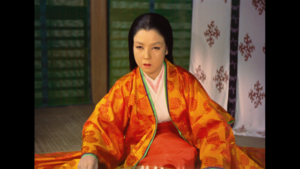 ORANGE
ORANGE
Gate of Hell (Teinosuke Kinugasa, Japan, 1953)
I can think of no more visually arresting use of orange than the costumes in Gate of Hell. I became aware of this film following Sarah Street’s fascinating research into the diffusion of Eatmancolor technology in Japan and enjoyed teaching it last semester as part of my seminar for master’s students on colour cinema. The film couples extreme restraint in terms of performance with a highly expressive mise-en-scène, perfectly encapsulating the themes of frustrated desire at the centre of its plot. The film was recently restored, which means that despite the notorious pink-fade associated with Eastmancolor prints, we can still enjoy its scorching palette and see why it received an Oscar for its costume design.
Available on the Criterion Channel: https://www.criterionchannel.com/gate-of-hell
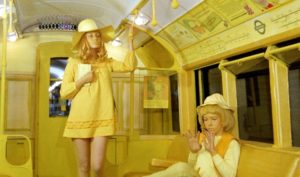 YELLOW
YELLOW
The Boy Who Turned Yellow (Powell and Pressburger, UK, 1972)
Powell and Pressburger are well known for their innovative colour films, producing many of the UK’s most treasured Technicolor features including Black Narcissus (1947) and The Red Shoes (1948). The Boy Who Turned Yellow is something of a rather different order however, employing colour in an almost surrealist manner in this quirky short. Their last collaboration, made for the Children’s Film Foundation using Eastmancolor stock, sees a London tube train and its passengers all turn yellow, before further bizarre events ensue (involving lost mice, the tower of London, and fantastical travel through a television set). Follow this link for a brilliant short essay on the film from the Eastmancolor Revolution Team: ( https://eastmancolor.info/2017/05/18/colour-fantasy-and-the-childrens-film-foundation-the-boy-who-turned-yellow-1972/)
Available on BFIPlayer: https://player.bfi.org.uk/rentals/film/watch-the-boy-who-turned-yellow-1972-online
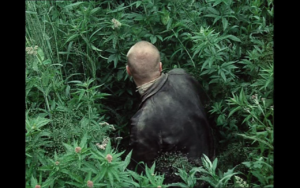 GREEN
GREEN
Stalker (Takovsky, USSR, 1979)
Green is a colour with a curious double identity, at once associated with the natural world and its therapeutic benefits, but also carrying connotations of toxicity and pollution. No film more astutely exploits this binary than Tarkovsky’s Stalker as we transition from the greyscale palette of the near-future Soviet Union into the green-space of the mysterious “zone”. The verdant expanses of this almost supernatural landscape highlight the double possibilities of the colour green: it at once promises the chance of restorative fulfilment with the wishes granted to those travellers who make it to “the room” at the centre of the terrain, but this possibility is coupled with the threat of noxious contamination, and the tales of bodily and psychic corruption that supposedly haunt those who have visited the zone. Greenness apparently also plagued the film in its initial production stages, when the imported Kodak stock emerged from the laboratory suffused with a green-tint, rendering the footage unusable.
Available on googleplay: https://play.google.com/store/movies/details/Stalker?gl=GB&hl=en&id=9nm8wrcWh0Y
 BLUE
BLUE
Blue (Derek Jarman, UK, 1993)
The last film Jarman made, completed months before he died from AIDS and while he experienced partial blindess, Blue explores remembrance, death, love and loss through the use of a single colour. Partially inspired by artist Yves Klein’s patented hue of International Klein Blue, this film is like a colour-field painting made of light, one which forces viewers to question colour as both an embodied and a psychological experience. You can read more about the film on Tate’s website: https://www.tate.org.uk/art/artworks/jarman-blue-t14555
Available on Amazon via Fandor: https://www.amazon.com/Blue-Tilda-Swinton/dp/B01M2VMH6D
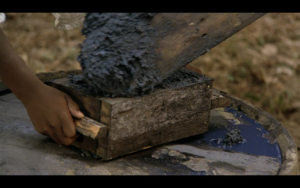 INDIGO
INDIGO
Daughters of the Dust (Julie Dash, USA, 1991)
Indigo is a colour with a fascinating and troubled history, one intertwined with slavery and colonial violence. Indigo operated historically as both a colour and a currency, a pigment that could be traded for slaves, but was also the product of enforced labour in India, the Caribbean, and America. In Daughters of the Dust, the colour operates as a chromatic motif that connects the past and future of the Peazant family as they contemplate their migration to the mainland in turn-of-the-century America. Scenes of indigo processing and its transformation into cakes bear witness to Nana’s recollection of her ancestors hands being “scarred with blue from the poisonous indigo dye”. Yet the future of the family, the unborn child who narrates much of the film, appears with an indigo-dyed ribbon in her hair as a reminder of this continued chromatic legacy.
Available on BFIplayer: https://player.bfi.org.uk/rentals/film/watch-daughters-of-the-dust-1991-online
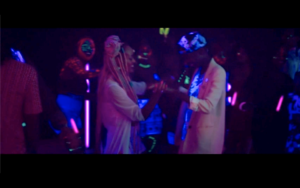 VIOLET
VIOLET
Rafiki (Wanuri Kahiu, Kenya, 2018)
If I’m allowed to bend the rules here slightly and think about ultra-violet, I’ll conclude our film rainbow with Wanuri Kahiu’s Afro-bubblegum feature Rafiki. Discussions of the film following its release largely focused on its censorship by the Kenyan authorities due to queer romance central to the film’s narrative. However, Kahiu’s use of colour, principally pinks and lilacs is one Rafiki’s most striking features, particularly the nightclub sequence featuring the lurid glow of facepaint and glowsticks under black light. To borrow the terms from Kahiu’s Afro-bubblegrum manifesto, the palette here is fun, fierce, and frivolous! Just what we need during a rather cloudy lockdown here in Fife.
Available on BFIplayer: https://player.bfi.org.uk/rentals/film/watch-rafiki-2018-online
